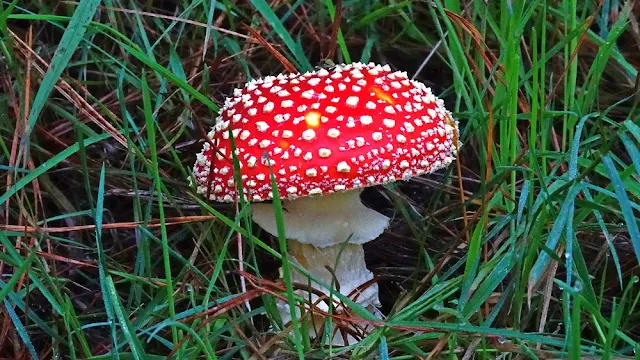With the recent dramatic arrival of winter, we start seeing fungi fruiting bodies appearing in the bush, in parks and gardens and on nature strips. The wonderful, sometimes beautiful, sometimes weird ‘mushrooms’ and ‘toadstools’ (unscientific terms often used interchangeably) are just the fruiting body of the fungal organism that is mostly hidden underground.
It’s important to understand that fungi are not plants: they do not reproduce from seed, rely on sunlight for their energy or photosynthesize like plants do.
Most trees, in fact probably 90% of all plant species, require an association with fungi in the soil. This symbiotic relationship is called mycorrhiza. Some plants benefit from a mycorrhiza from one species of fungi. Some trees gain benefit from hundreds of different fungi and some plants, some orchids for example, will ONLY grow if there is just one particular fungus in the vicinity. Some trees can grow without the help of any fungi but this pretty rare.
Fungi have a network of thin fibres called hyphae growing through the substrate (the organic matter on which they grow). This network of root-like threads is called the mycelium.
 |
| Hyphae on the underside of a piece of bark |
The mycelium of mycorrhizal fungi connects with the root systems of nearby trees and enables the exchange of various substances from the fungus to the tree (and vice versa). It has been recently discovered that the mycelium can even enable the exchange of substances between the trees themselves.
 |
| Austropaxillus sp - a mycorrhizal fungus often found in eucalypt woodland. |
In this way, the fungus increases the absorptive area of the tree roots by as much as 700%.
 |
| The familiar Fly Agaric mushroom is an introduced mycorrhizal fungus associated with exotic trees such as oaks and pines. There is some evidence this fungus might be adapting to native trees. |
The increased quantity of water and minerals picked up by the tree is converted to carbohydrates through photosynthesis using carbon dioxide from the air, sunlight and chlorophyl in the leaves. Some of these carbohydrates are then returned, via the hyphae, to the fungus enabling it to grow: both organisms benefit.
Mycorrhizal fungi are just one group of fungi. Saprotrophic fungi only grow on dead organic matter and they recycle nutrients back to the soil. Parasitic fungi only grow on living organisms, plants and animals, and they absorb nutrients directly from their host generally to the benefit of the fungus only. Parasitic fungi can be so detrimental to a host plant or animal that it can cause its complete demise. When this happens, some parasitic fungi can change to become saprotrophic and continue to survive on the dead host.
.jpg) |
| Left: Saprotrophic Mycena sp growing on dead wood. Right: Parasitic Cordyceps sp growing on moth larvae under the ground. |
The humble fungus deserves proper respect for its role in the environment. Our trees certainly need them.
No comments:
Post a Comment